Introduction
The Internet of Things (IoT) is not just a buzzword; it represents a paradigm shift that is reshaping industries and redefining operational excellence. With a vast network of interconnected devices equipped with advanced sensors and software, IoT enables seamless data collection and real-time communication, driving unprecedented levels of efficiency and innovation. As organizations navigate the complexities of this digital revolution, the benefits of effective IoT implementation become increasingly clear: enhanced productivity, optimized resource management, and improved customer engagement.
However, the journey is not without its challenges, including security concerns and integration hurdles. This article delves into the intricacies of IoT, exploring its key components, real-world applications, and the vital role of automation in unlocking its full potential. By understanding the current landscape and future directions of IoT, organizations can better position themselves to harness this transformative technology and propel their operations toward greater success.
What is IoT and How Does it Work?
The Internet of Things (IoT) represents a transformative network of interconnected devices equipped with sensors, software, and advanced technologies that enable seamless information collection and exchange over the internet. This integration allows devices, ranging from household appliances to complex industrial machinery, to communicate effectively by leveraging cloud connectivity. By harnessing time series information management, organizations can significantly enhance their operational processes and decision-making capabilities.
As industries continue to embrace the advancements of Industry 4.0, the significance of information management becomes increasingly evident. In fact, a modern industrial facility can produce over a terabyte of information daily, which can be overwhelming without the right tools to analyze it. Effective use of IoT not only facilitates real-time monitoring but also drives automation, leading to enhanced productivity and adaptability in response to changing market demands.
The growing trend of smart systems highlights the potential of IoT in creating intelligent environments. These systems analyze data to optimize energy usage and improve overall efficiency. For instance, smart grids utilize IoT technologies to enable two-way communication between devices, ensuring better energy management and reliability.
As quoted in recent analyses, “Digitalization has allowed ‘smart’ to become the epicenter of the current technological developments,” emphasizing the central role of IoT in modern enterprise. Through connected devices, businesses can lower expenses, streamline workflows, and create new revenue opportunities. The execution of IoT solutions not only boosts efficiency but also improves the customer experience, showcasing its worth across different sectors.
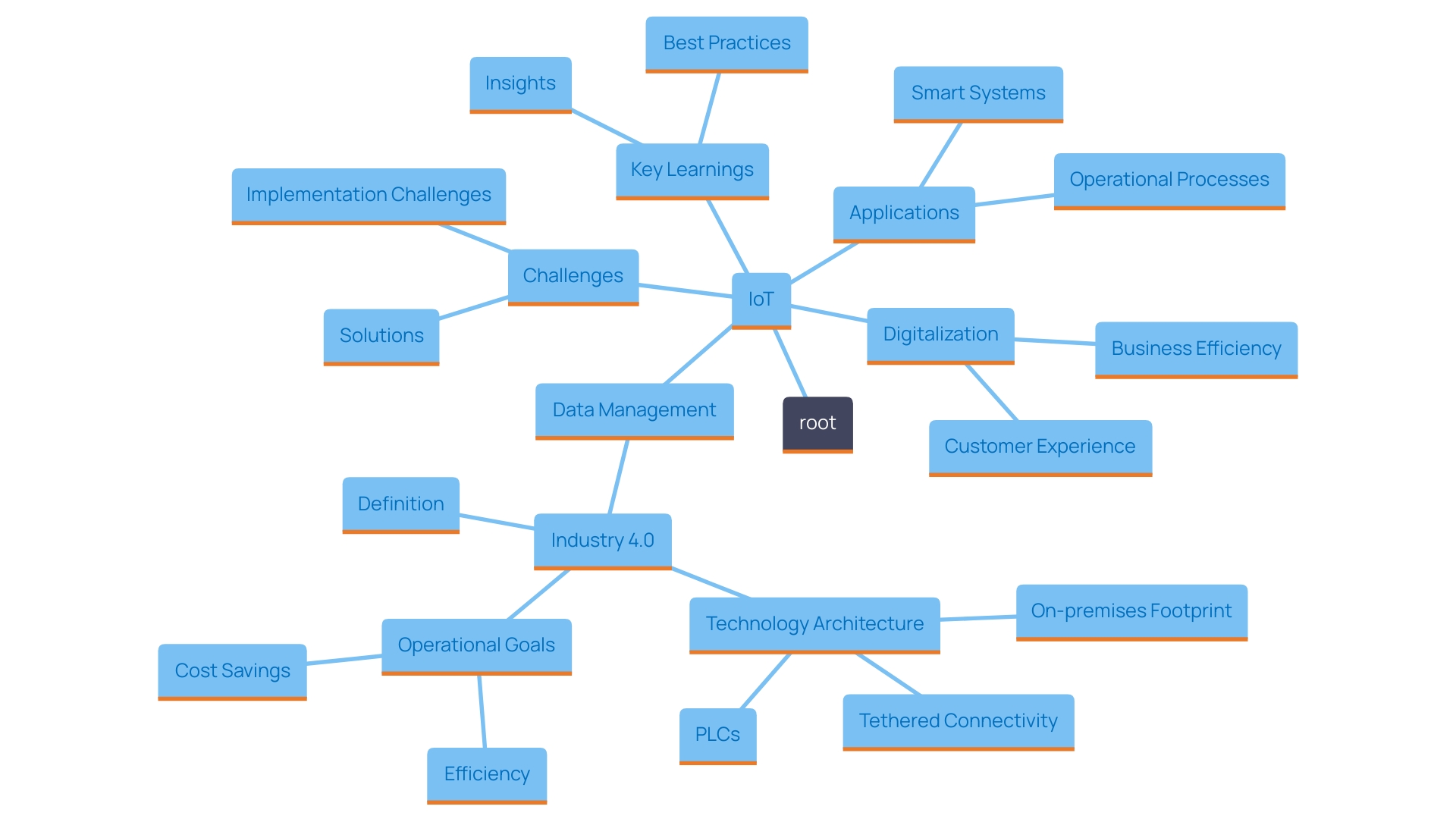
Key Components of IoT
The Internet of Things (IoT) is transforming sectors by integrating various elements that improve efficiency in operations and data-driven decision-making. Central to this transformation are sensors and devices that collect real-time information from their surroundings. These sensors can be found in various applications, from healthcare monitoring systems to industrial machinery, collecting critical information that informs operational strategies.
Connectivity plays a pivotal role in the IoT ecosystem. Technologies like WI-Fi, Bluetooth, and cellular networks facilitate effortless information transfer to cloud infrastructures. This connectivity is crucial for real-time information accessibility, allowing organizations to respond swiftly to changing conditions. For instance, the integration of these technologies supports the ever-growing demands of Industry 4.0, where digital transformation is key to remaining competitive.
Once the information arrives in the cloud, sophisticated processing and analysis take place. This transformation of raw information into actionable insights allows businesses to optimize their operations, enhance productivity, and drive innovation. As emphasized in recent trends, many organizations are utilizing time series information management to monitor and analyze their operational metrics effectively. This capability is essential for identifying inefficiencies and improving overall equipment effectiveness (OEE).
User interfaces, such as intuitive dashboards and mobile applications, empower users to engage with the processed information. These interfaces not only facilitate decision-making but also enhance user engagement by providing real-time feedback on system performance. The evolution of these tools marks a significant step forward in making complex data comprehensible and actionable for decision-makers across industries.
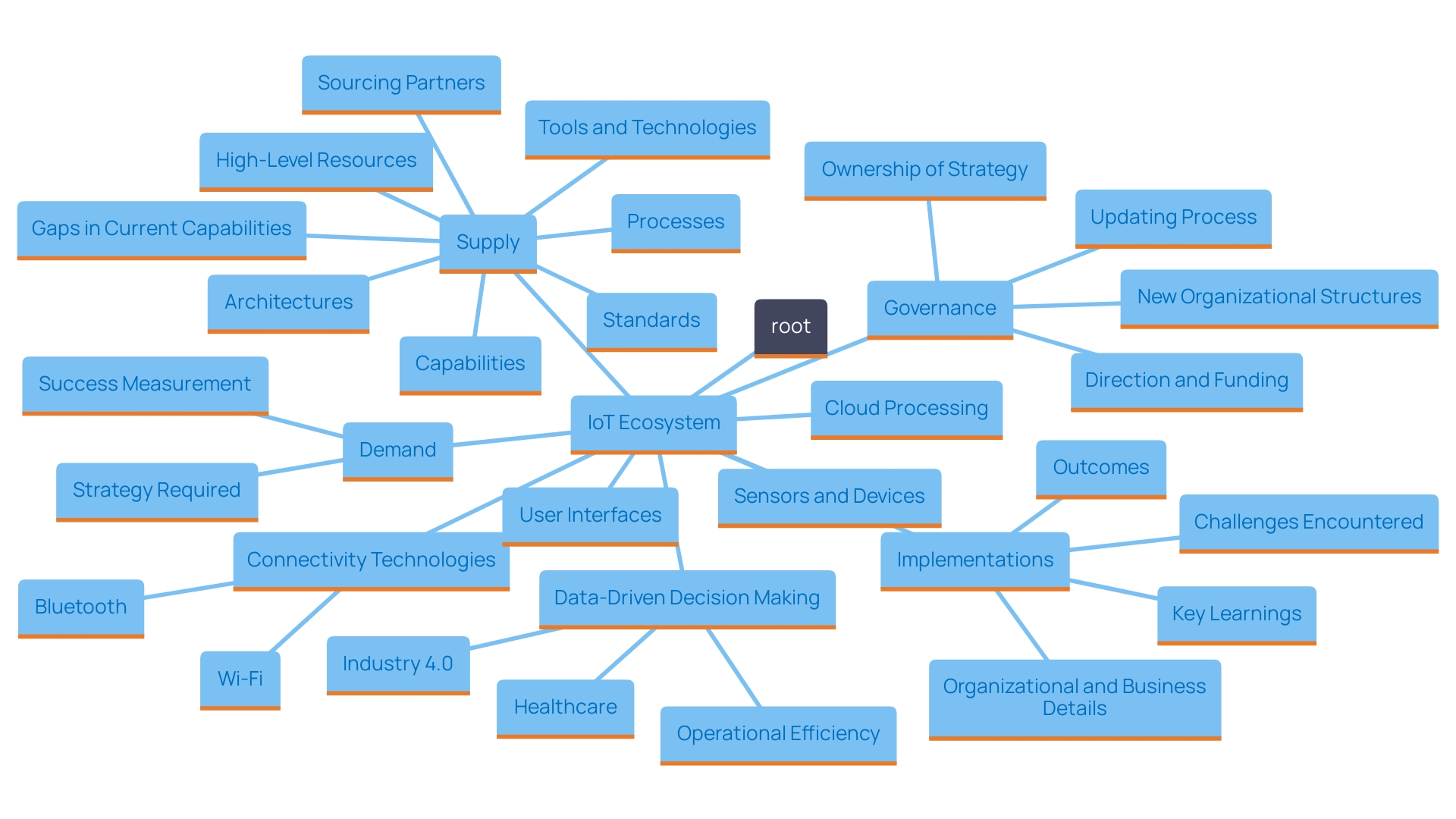
Benefits of IoT in Modern Industries
The Internet of Things (IoT) is catalyzing a transformative wave across various sectors, heralding the onset of Industry 4.0. ‘This digital revolution is characterized by the integration of advanced technologies into manufacturing processes, aiming to enhance efficiency, resource management, and customer engagement.’. As highlighted by an analyst at Gartner, IoT is projected to expand at a remarkable rate of thirty percent in the coming years, underlining its pivotal role in reshaping industries.
IoT enables real-time monitoring and automation, allowing entities to streamline their operations and significantly reduce costs. This capability also empowers decision-makers to adopt data-driven strategies that swiftly respond to market dynamics and evolving customer needs. For example, by utilizing time series data management, entities can leverage extensive volumes of information created by interconnected devices, resulting in better predictive analytics and enhanced management control.
Moreover, the IIoT (Industrial Internet of Things) specifically focuses on industrial applications, enhancing processes in sectors like manufacturing, energy, and transportation. It encompasses complex systems that require stringent security measures and essential management controls. This targeted approach not only boosts productivity but also enhances safety measures across various industrial landscapes.
The significance of IoT extends beyond mere efficiency; it paves the way for smarter energy management systems that align consumption with generation, contributing to sustainability efforts. As entities worldwide adopt this technological change, they are not only updating their processes but also reshaping the benchmarks of customer interaction and performance excellence.
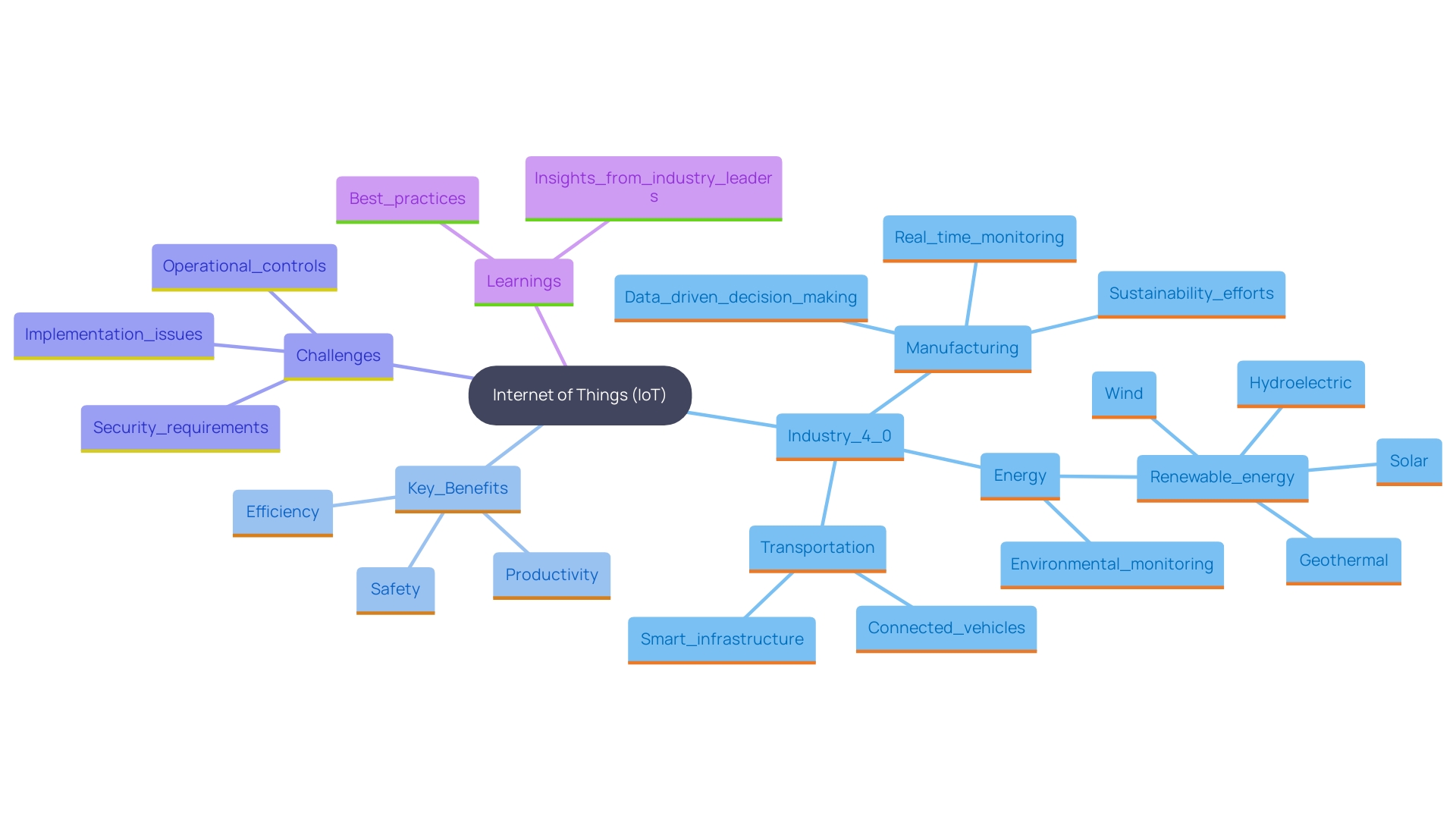
Role of Automation in IoT
Automation is vital for unlocking the full potential of the Internet of Things (IoT). By harnessing automation technologies in conjunction with IoT, organizations can streamline operations, significantly reducing manual interventions and the associated risks of human error. This integration not only enhances operational speed but also bolsters accuracy across various processes. For instance, automated systems can promptly respond to data inputs from IoT sensors, facilitating real-time actions such as recalibrating machinery, optimizing inventory levels, or alerting staff to upcoming maintenance needs.
A recent report on Industry 4.0 highlights how 22 companies successfully integrated automation with IoT technologies. These implementations yielded remarkable outcomes, including increased Overall Equipment Effectiveness (OEE) and substantial cost reductions. However, the journey was not without challenges. Many organizations faced resistance to change and initial technical hurdles, which they overcame by engaging employees through training programs and demonstrating the tangible benefits of automation.
Moreover, as companies increasingly adopt generative AI, sectors like marketing and product development are seeing significant transformations—34% of businesses report using AI in marketing, while 23% apply it in product innovation. Such statistics underscore the importance of embracing automation to stay competitive in a fast-evolving market.
Furthermore, intelligent automation can be categorized into several levels, including AI-augmented, autonomous, autonomic, and cognitive systems. Each category reflects varying degrees of sophistication in how these systems interact with human workflows and the environment. Grasping these differences can assist producers in choosing the appropriate automation options to improve productivity and efficiency in operations.
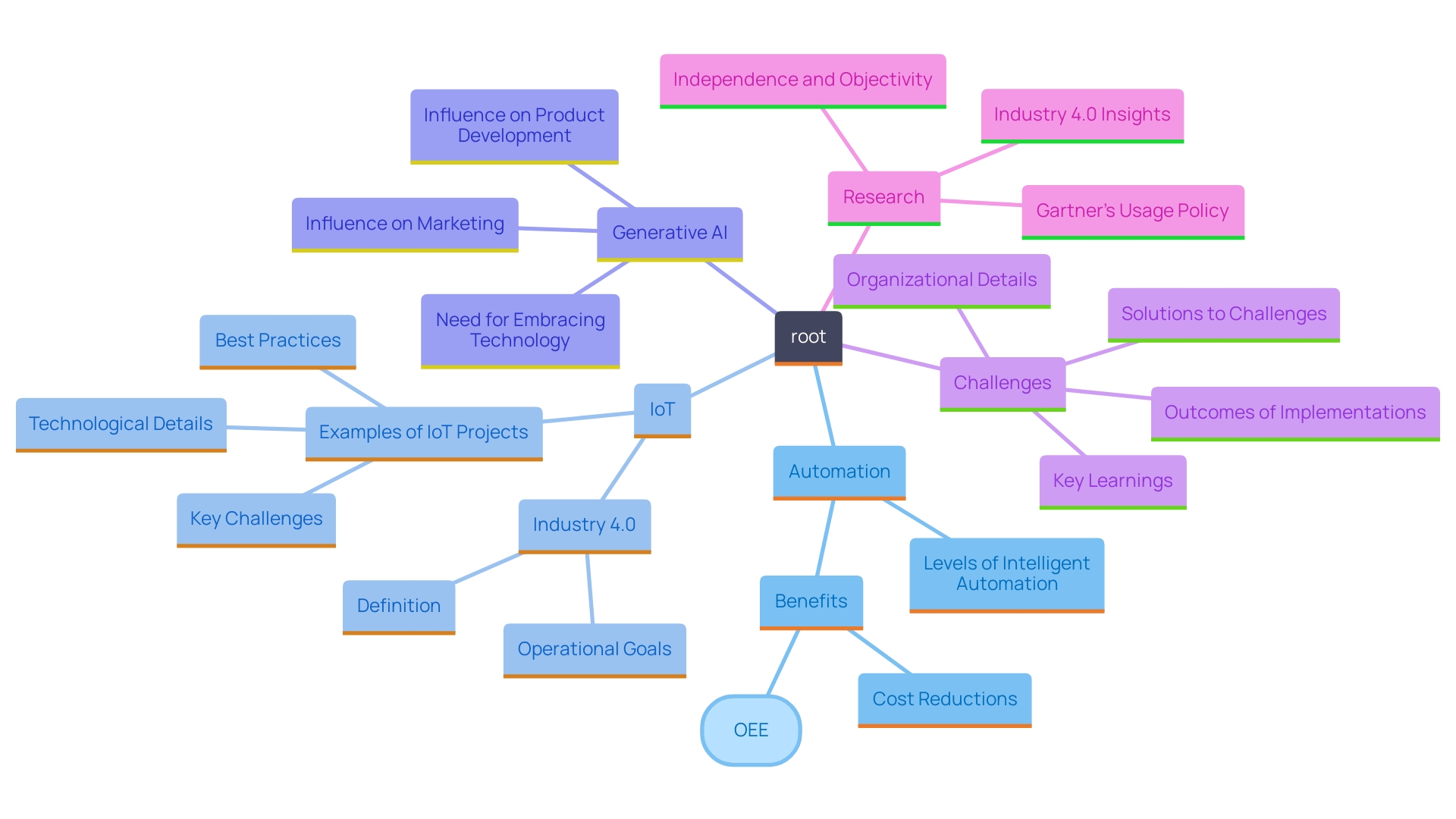
Real-world Applications of IoT
The Internet of Things (IoT) is revolutionizing various sectors, showcasing its versatility in applications such as smart manufacturing, healthcare, agriculture, and logistics. In smart manufacturing, IoT devices enable real-time monitoring of equipment performance, facilitating predictive maintenance that can substantially reduce downtime. For example, producers adopting Industry 4.0 initiatives have noted considerable enhancements in overall equipment effectiveness (OEE) and lowered expenses through improved information integration and process automation.
In the healthcare sector, wearable IoT devices are transforming patient care. These devices continuously track vital signs, allowing healthcare providers to monitor patients in real-time and respond swiftly to any anomalies. Outcomes from recent implementations have shown that hospitals utilizing these technologies can enhance patient outcomes while also optimizing resource allocation and staff efficiency.
Agriculture is experiencing a similar transformation through precision farming techniques powered by IoT. By utilizing data-driven insights, farmers can optimize resource usage—such as water, fertilizers, and pesticides—resulting in improved crop yields and reduced environmental impact. The adoption of IoT in agriculture has led to documented increases in productivity, as farmers are now able to make informed decisions based on real-time data.
Logistics companies are also leveraging IoT to streamline operations, using connected devices to monitor supply chain activities. This integration allows for better tracking of shipments, inventory management, and predictive analytics related to demand forecasting. Businesses that have adopted IoT solutions report enhanced operational efficiency and reduced costs, highlighting the critical role of technology in modern logistics.
The challenges encountered during these implementations often center on merging new technologies with current systems and overcoming resistance to change within enterprises. However, companies that prioritize training and communication with their teams tend to navigate these hurdles more effectively, leading to successful outcomes and valuable lessons for others in the field. By understanding these dynamics, entities can better position themselves to harness the power of IoT across their operations.
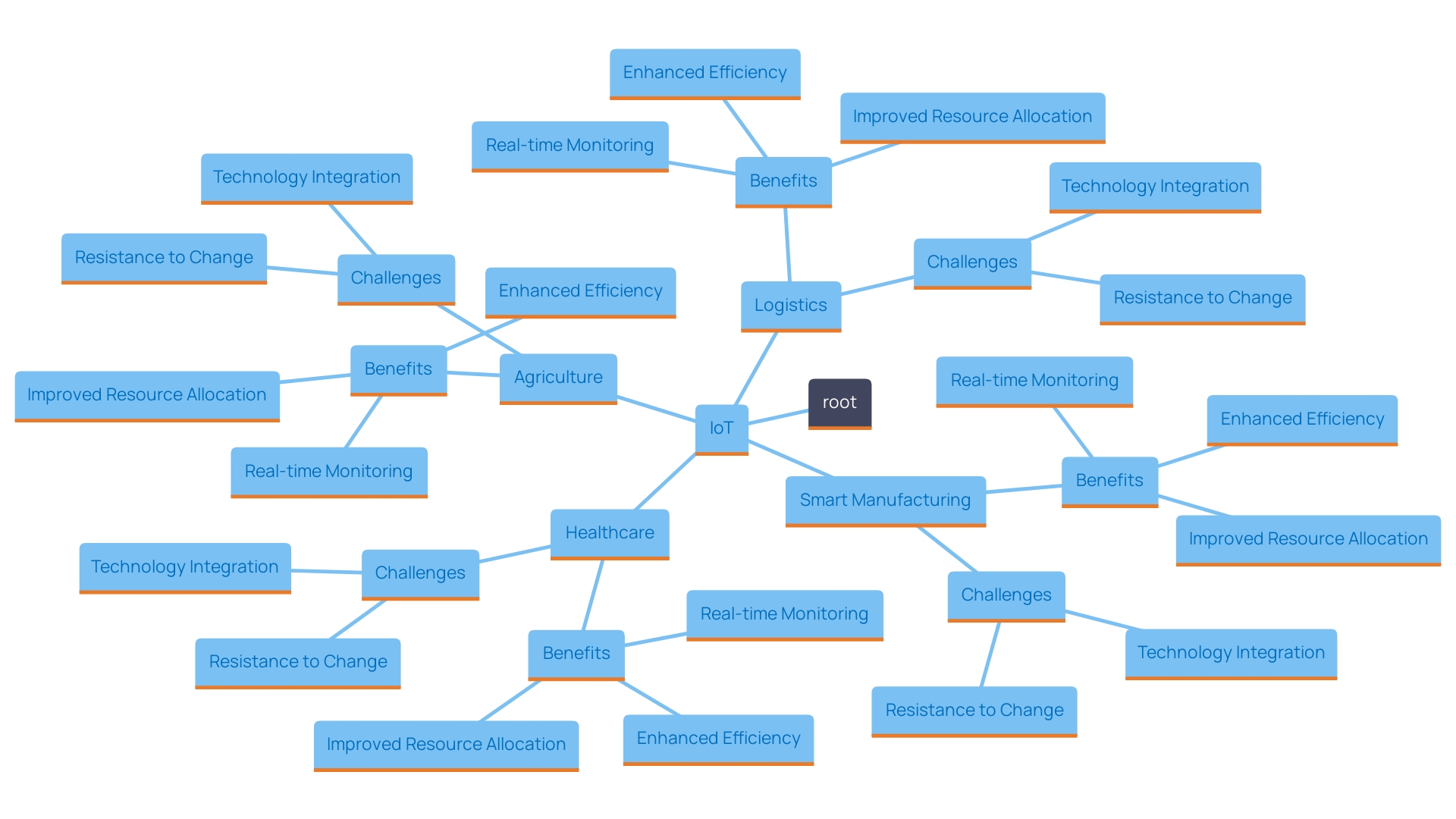
Challenges and Future of IoT Adoption
The Internet of Things (IoT) stands at the forefront of technological innovation, enabling everyday objects to connect, collect, and share information over the internet. This transformative capability offers numerous advantages, yet the path to widespread IoT adoption is fraught with challenges. Key hurdles include significant security concerns and data privacy issues, which have led to growing apprehension among companies. ‘According to a recent report, a staggering 97% of entities face difficulties in securing IoT and connected devices, highlighting the critical need for robust digital trust as the backbone of these integrations.’.
Moreover, the complexity of integrating IoT solutions with existing systems complicates the situation. Many manufacturers are struggling to merge new technologies with legacy systems, which often leads to inefficiencies and operational bottlenecks. Successful implementations have shown that organizations can overcome these obstacles by creating a unified information architecture that serves as a single source of truth. This architecture not only organizes information from diverse sources but also enhances decision-making processes through structured and contextualized insights.
As the IoT landscape evolves, advancements in connectivity, data analytics, and machine learning are paving the way for innovative solutions that can significantly enhance operational efficiency and productivity. Companies that embrace these technological trends can expect to achieve higher Overall Equipment Effectiveness (OEE) and improved key performance indicators (KPIs), ultimately driving business growth. The potential for future growth in IoT is immense, provided that organizations prioritize addressing security and integration challenges while leveraging the latest technological advancements.
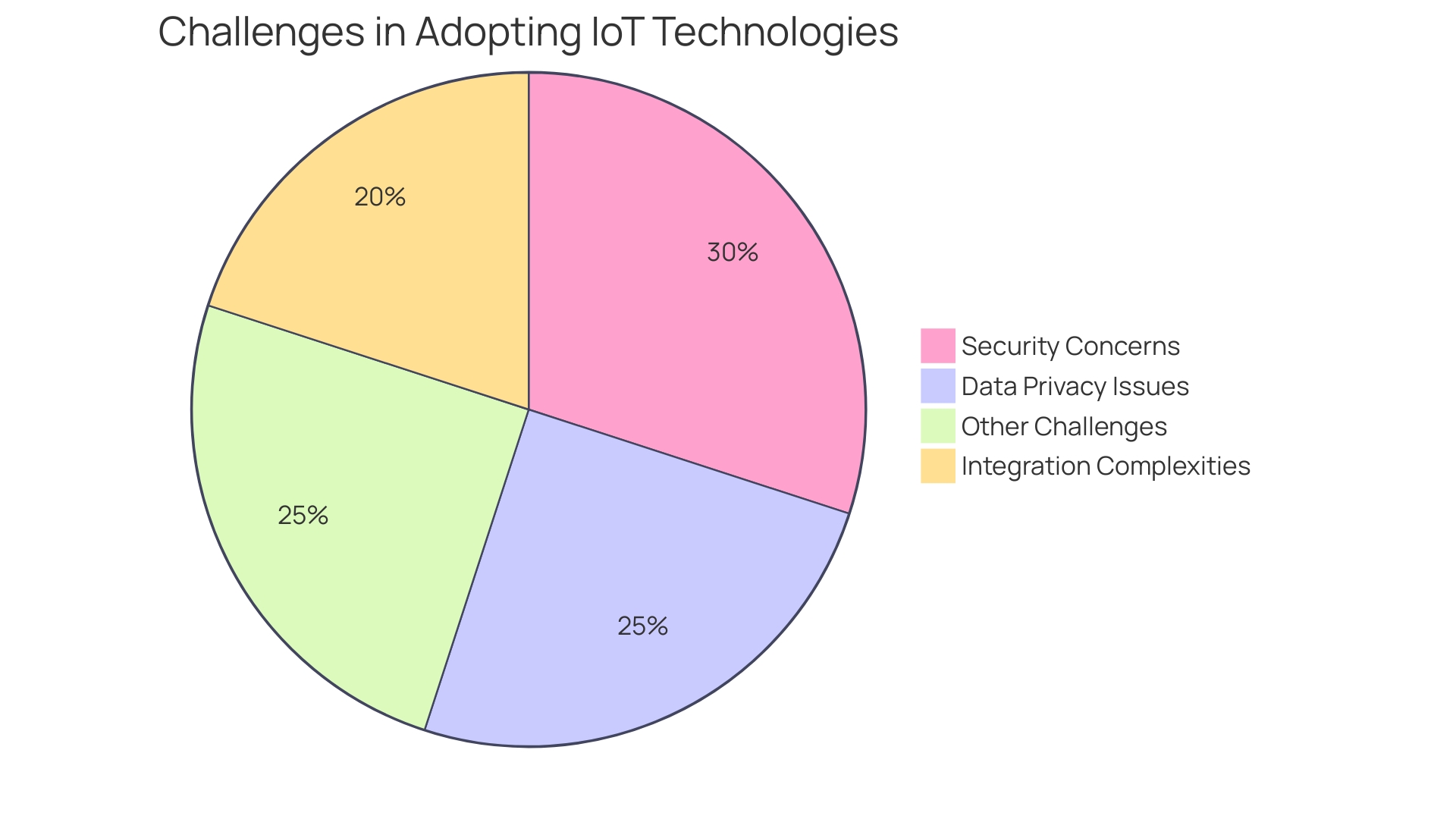
Conclusion
The Internet of Things (IoT) is fundamentally transforming industries by creating a network of interconnected devices that streamline operations and enhance decision-making capabilities. Key components, such as sensors and connectivity technologies, enable real-time data collection and analysis, which are crucial for organizations seeking to improve efficiency and responsiveness in an increasingly competitive landscape. As industries embrace this digital revolution, the benefits of IoT, including cost reduction, optimized resource management, and improved customer engagement, become increasingly apparent.
Automation plays a critical role in maximizing the potential of IoT by reducing manual intervention and enhancing accuracy across various processes. Successful integration of automation and IoT has led to significant improvements in operational metrics such as Overall Equipment Effectiveness (OEE), demonstrating the tangible benefits of this synergy. Real-world applications in sectors such as manufacturing, healthcare, agriculture, and logistics underscore the versatility of IoT technologies in driving operational excellence and improving outcomes.
Despite the numerous advantages, challenges such as security concerns and integration complexities remain significant hurdles. Organizations must prioritize robust security measures and develop unified data architectures to navigate these challenges effectively. By doing so, they can harness the full potential of IoT, paving the way for innovative solutions that drive growth and enhance operational efficiency.
The future of IoT adoption is bright for those willing to address these challenges head-on and leverage the latest technological advancements to stay ahead in a rapidly evolving market.

